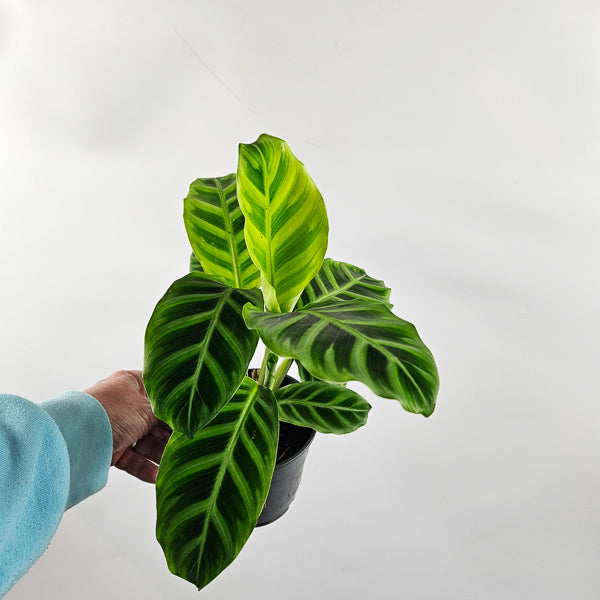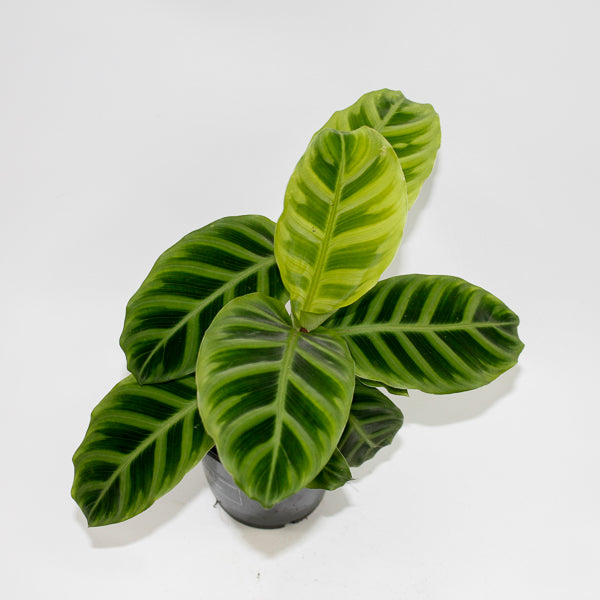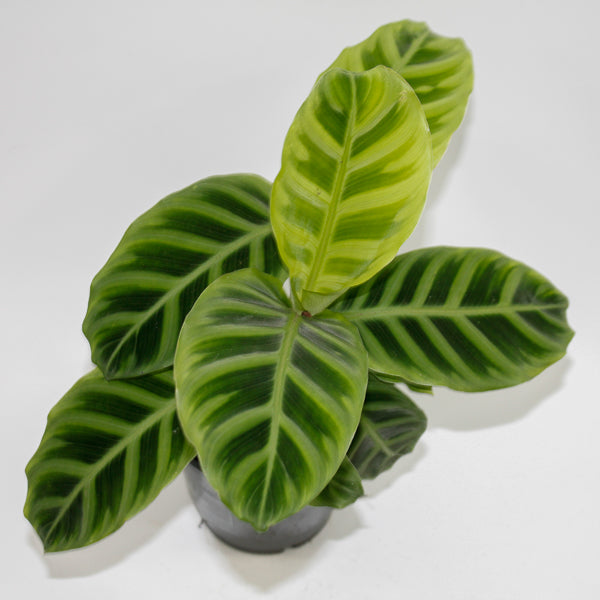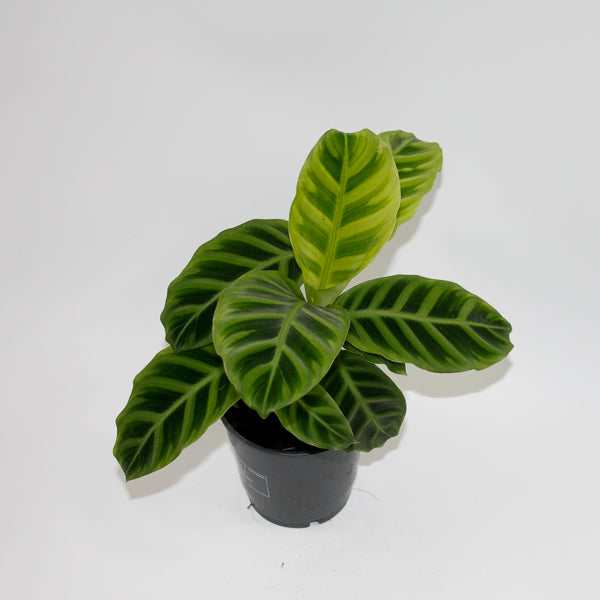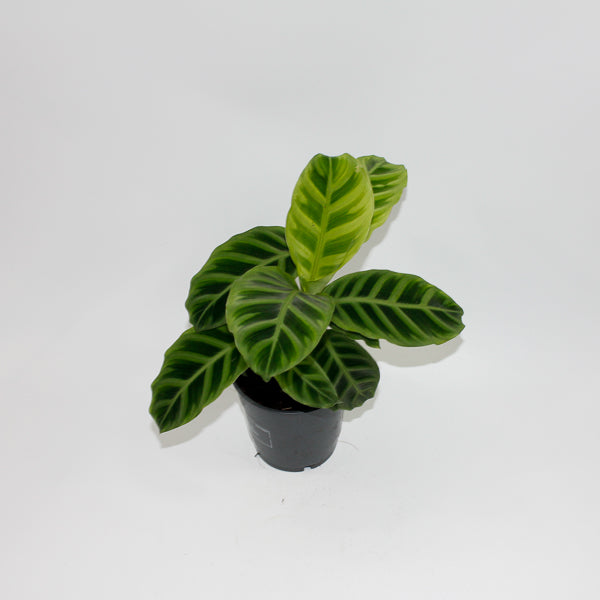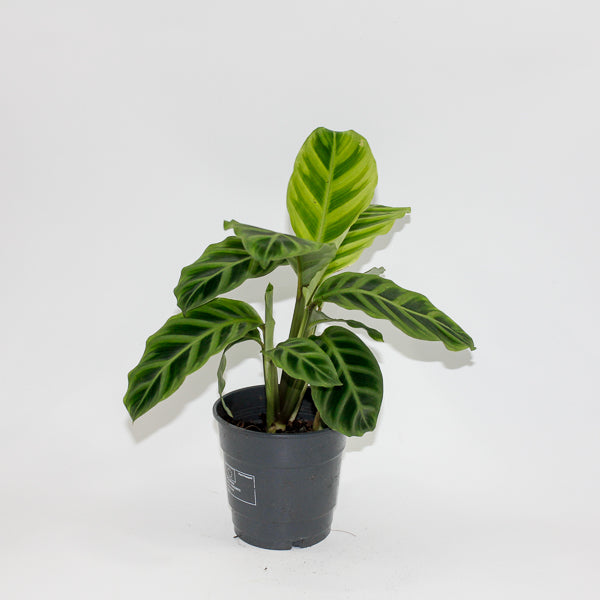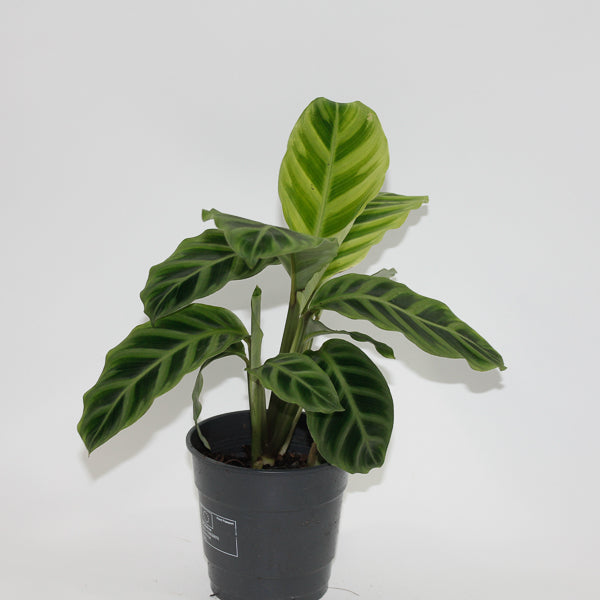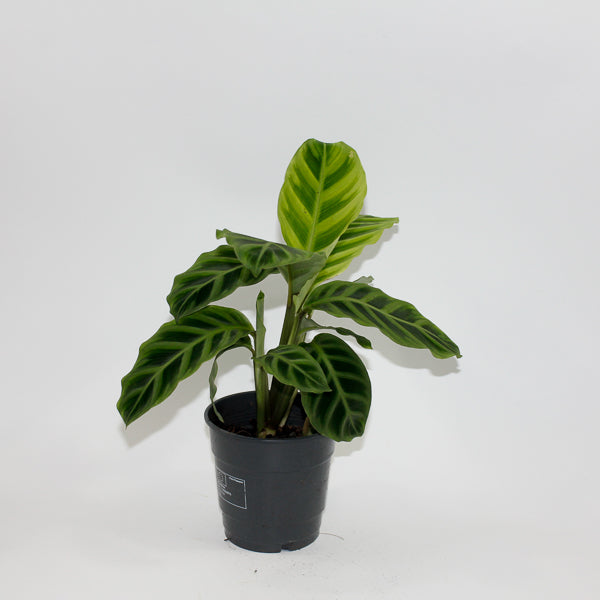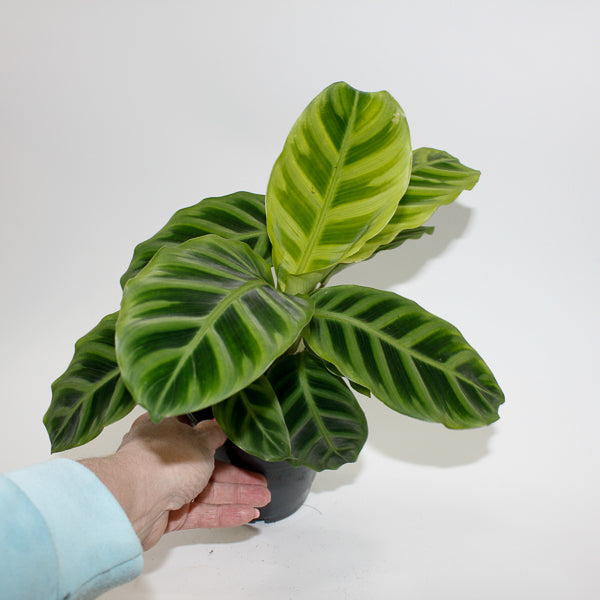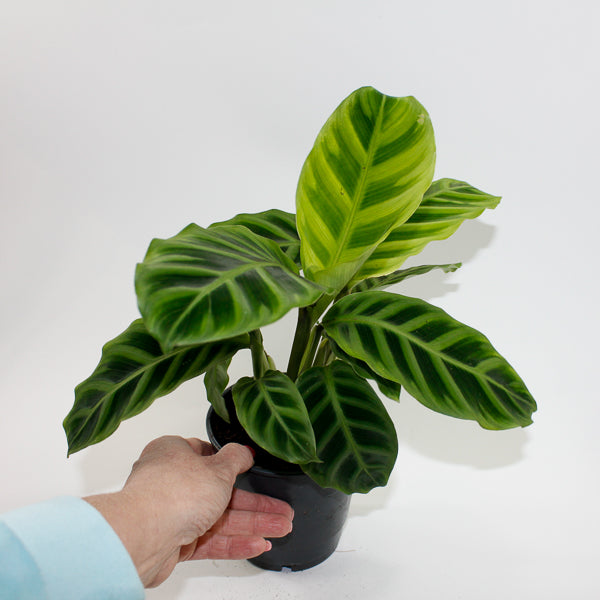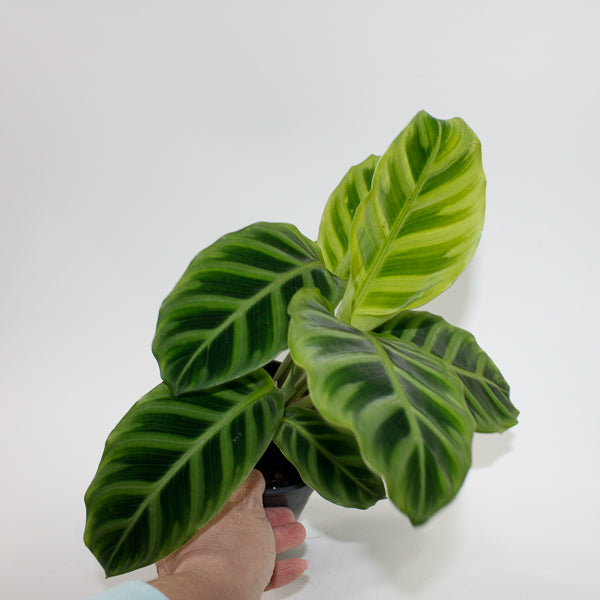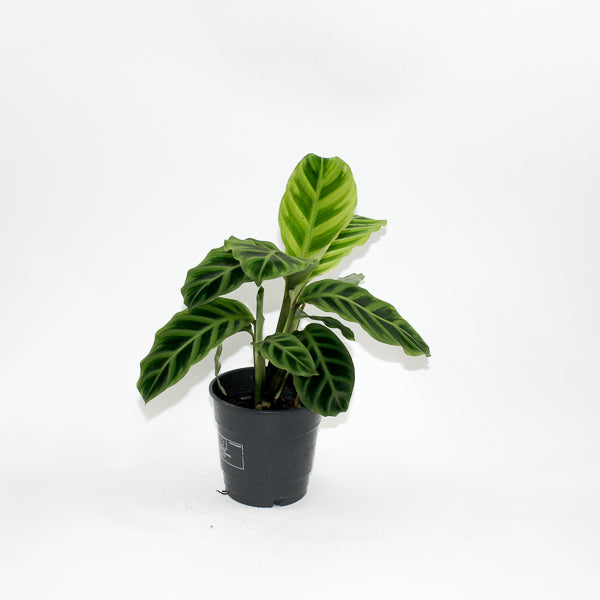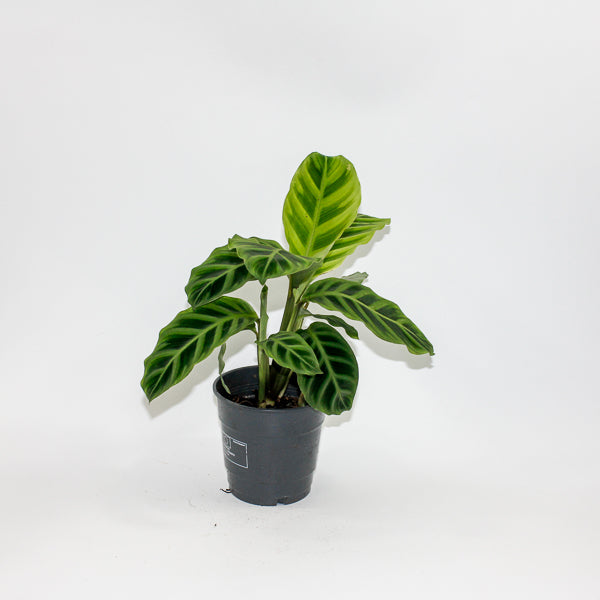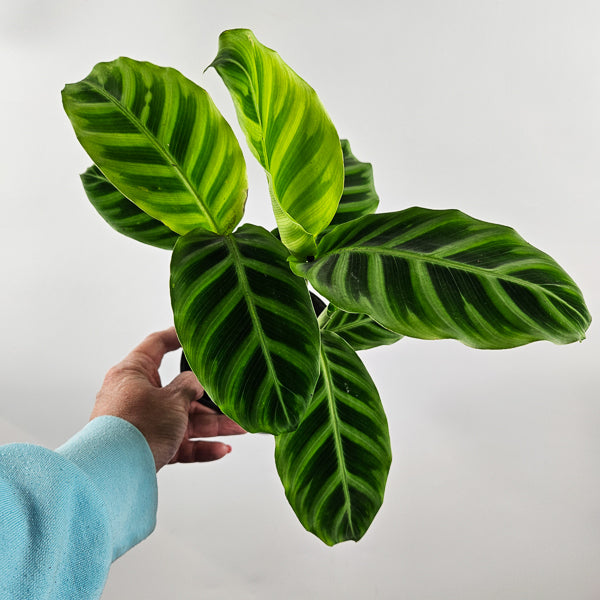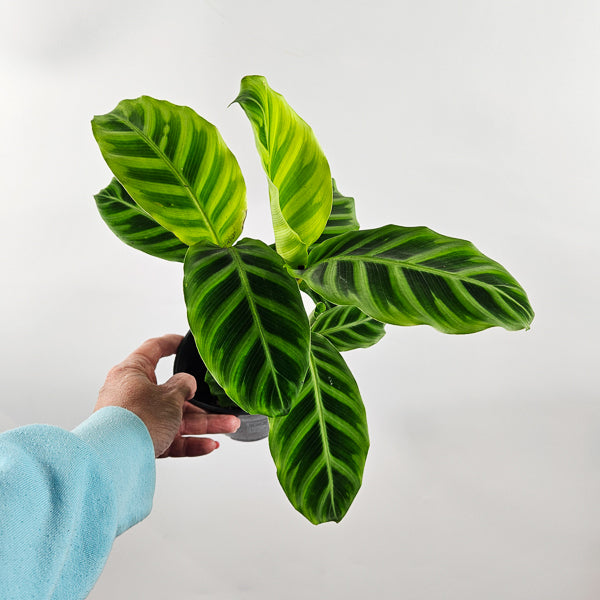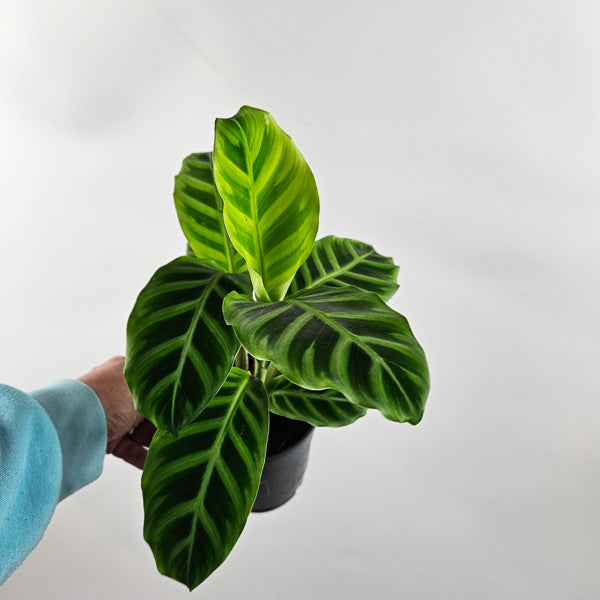1
/
of
16
Emm's Plant House
Calathea Zebrina Ø12cm H35cm
Calathea Zebrina Ø12cm H35cm
Regular price
£15.00 GBP
Regular price
Sale price
£15.00 GBP
Unit price
/
per
Taxes included.
Couldn't load pickup availability
Calathea zebrina, commonly known as the Zebra Plant, is a striking ornamental plant known for its bold, dark green leaves with distinct purple undersides and unique zebra-like stripes on the topside. The leaves’ pattern and vibrant coloration give this plant a dramatic, tropical appearance, making it a popular choice for those seeking a stunning addition to their indoor plant collection. It's also a low-maintenance, pet-friendly option that thrives in the right conditions.
- Full Botanical Name: Calathea zebrina
- Common Names: Zebra Plant, Zebra Calathea
- Country and/or Region of Origin: Native to the tropical regions of Brazil
- Growing Conditions in Native Habitat: Grows in shaded tropical forests with high humidity and rich, well-draining soil
Care Guide
Care Guide
Share
